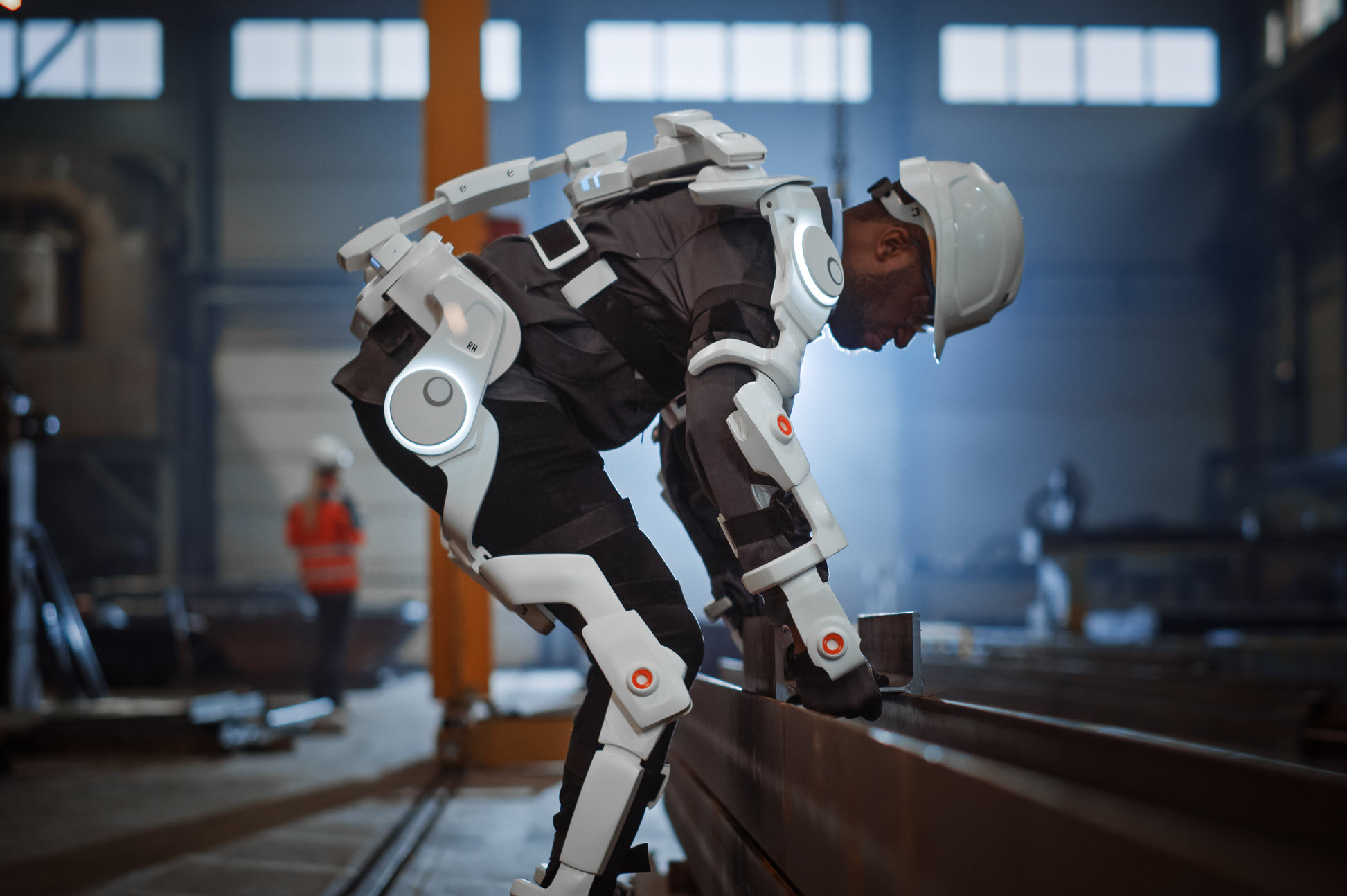Your Wearable Tech Questions Answered
Wearable technology devices have the potential to reduce musculoskeletal disorders (MSDs), but is the cost worth adding them to your risk management program? We dive into questions regarding value, employee privacy, and more.
October 23, 2023

The wearables market is growing rapidly, presenting users with new ways to engage with technology. With all the various types of wearable tech available to assist with employee safety, it can feel overwhelming for many organizations who are considering adding this type of technology to their risk control efforts.
Safety National’s Senior Risk Manager, Steve Simon, breaks down some of our most frequently asked questions.
1. Are companies experiencing significant losses before finding value in this technology?
Most organizations begin considering the implementation of these devices when they notice trends of high frequency and severity in manual material handling. They are trying to reduce their overall risks and prevent chronic injuries like musculoskeletal disorders (MSDs) and cumulative trauma disorders (CTDs). Employers can reach out to their broker or carrier for loss runs to assess if wearables are a good fit for their risk management program. Most brokers and third-party administrators (TPAs) will have loss analyses that segment types of claims, such as nature, occupations, departments, or locations to help identify if wearables are a worthy investment.
2. How do AI options work for the safety of lone workers?
In lone worker setups, where an employee is operating alone in an isolated area, other employees or supervisors cannot see or hear them. In these settings, many organizations have begun exploring AI programs to gather and analyze site data that uses sensors that detect temperature, hazards, and movement detection. AI could add to lone worker protection, however, this should not be the only option considered.
3. What data is available to validate the ability of wearables to reduce the frequency and severity of workplace injuries? For example, the use of forklift proximity sensors to mitigate collisions.
Most vendors do not have hard data to determine frequency and severity reductions. Instead, most vendors use success stories where they have seen frequency reduction. However, it is worth noting that the frequency reduction could be based on other variables, like changes in equipment.
4. What are the typical price points for ergonomic applications?
The price ranges can vary depending on the vendor. Typically, the monthly price range is around $500-$800 per user, and the annual price range is $6,000-$10,000 per user. Unless there are multiple locations utilizing this tech, most clients will only need to account for one user.
5. Do you need ergonomics training for the use of an ergonomic application? Would it be suitable for line supervisors to use?
Many of these applications, like those that provide AI-based risk assessments, are very easy to use but will require some baseline training. However, most vendors will provide instructions and training to get individuals and teams started. Some organizations will prefer to have their supervisor or operational managers involved.
6. Are there any concerns about biometric laws and employee privacy?
There are some more advanced products that can measure biometrics, like heart rate, pulse, and body temperature. If you plan to utilize the more advanced options, consult with your legal team on the right approach.
Employee privacy can be a concern for some individuals, however, having a formal wearable technology program like senior management commitment, policies, and employee involvement and awareness can prevent issues during the pilot or rollout phase. Litigation involving wearable devices typically includes patent disputes, product liability claims, and regulatory compliance issues. This is concentrated around products that are used on a personal basis and in the medical community versus other workplace settings.
7. What is the next step and the near-term future of wearable tech?
For those organizations that have explored market research for wearable technology and are ready to commit, the next step would be a pilot program. This will need to include training, testing, and launching with stakeholder involvement for the best results. However, the wearable tech industry is just beginning to scratch the surface in terms of definitive research-backed results. Understanding whether or not these products will have a true impact on an organization’s workplace safety will require further research.
8. How can organizations achieve the buy-in necessary to invest in this technology?
Consider outlining the pros and cons and sharing this information with senior management and the C-suite to begin the process. Building a business case will depend on several factors. For example, if the technology can generate detailed and specific data, like identifying critical patterns and trends in certain departments or job types, it may help build a better case. Be prepared to show the value outside of just a risk assessment. If wearables can enhance other areas, such as employee wellness programs, it can help boost your efforts to implement.
9. How do you determine return on investment (ROI) for this technology?
For those organizations that are using or piloting these tools, this technology would create its own ROI. However, some of the vendors have provided examples of ROI as part of their success stories. Success stories are not based on validated research that would control other variables in the workplace environment. For those clients having more success, it is challenging to determine if other factors resulted in higher ROI.
For more expertise, guidance or resources on this topic, please contact [email protected].

























